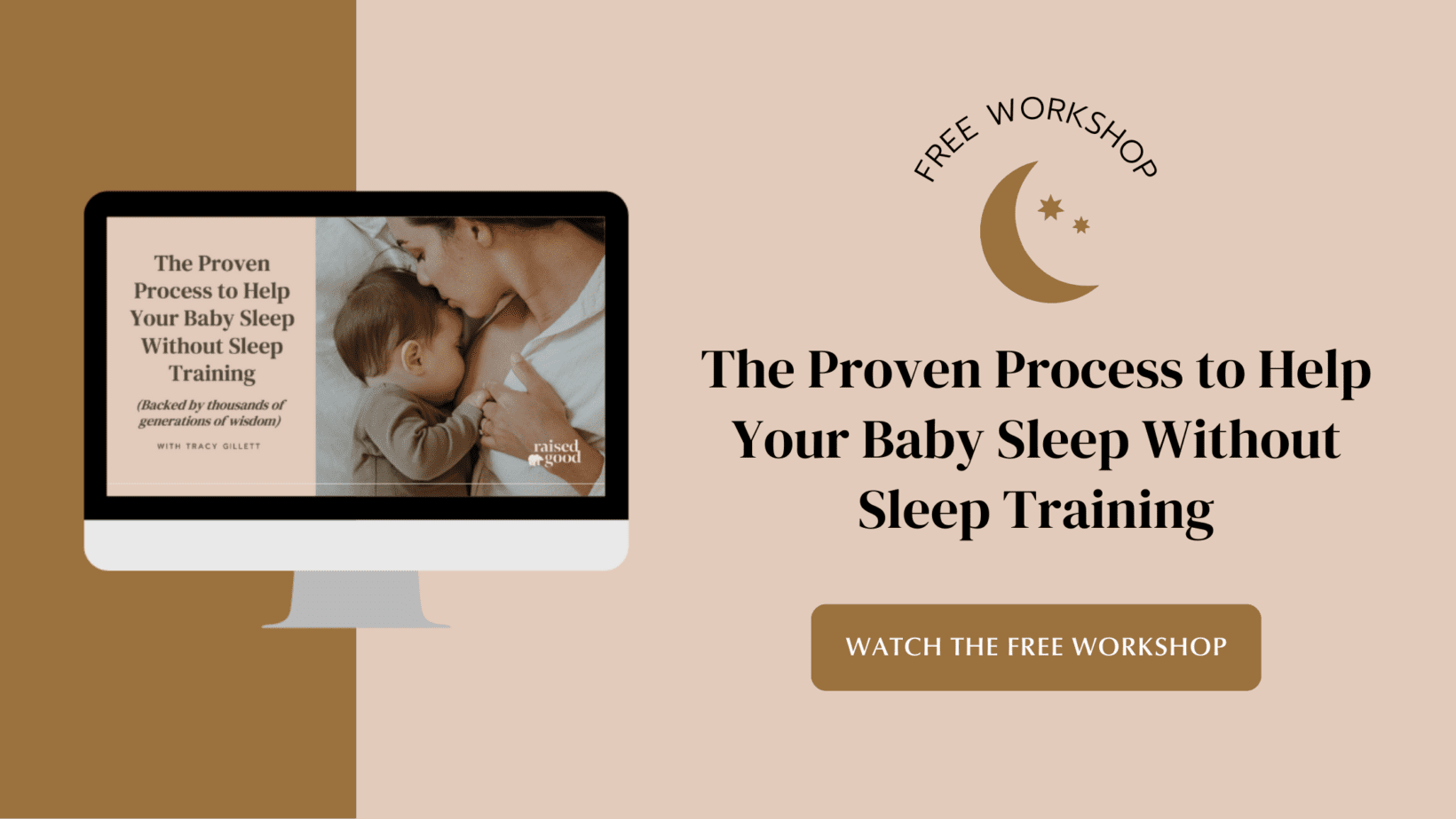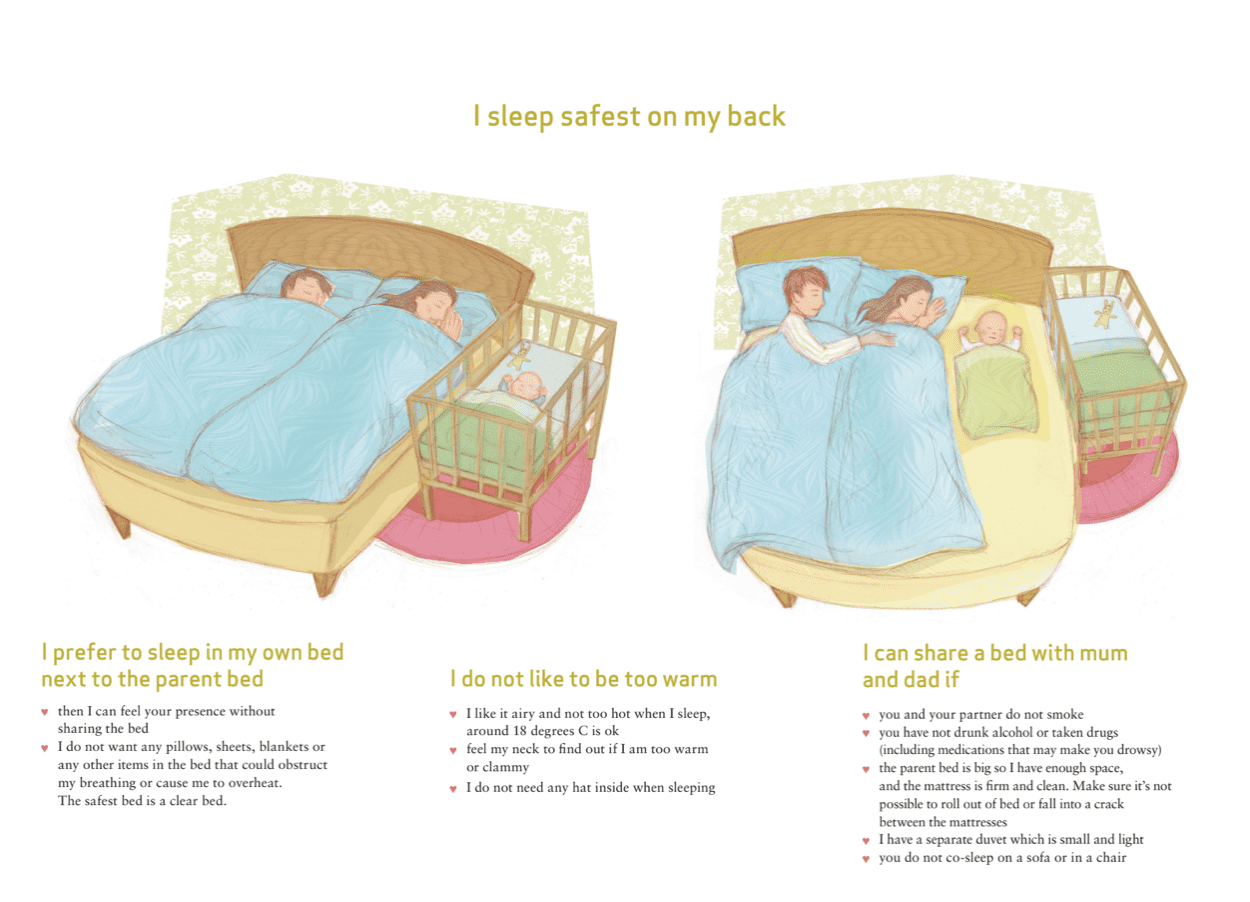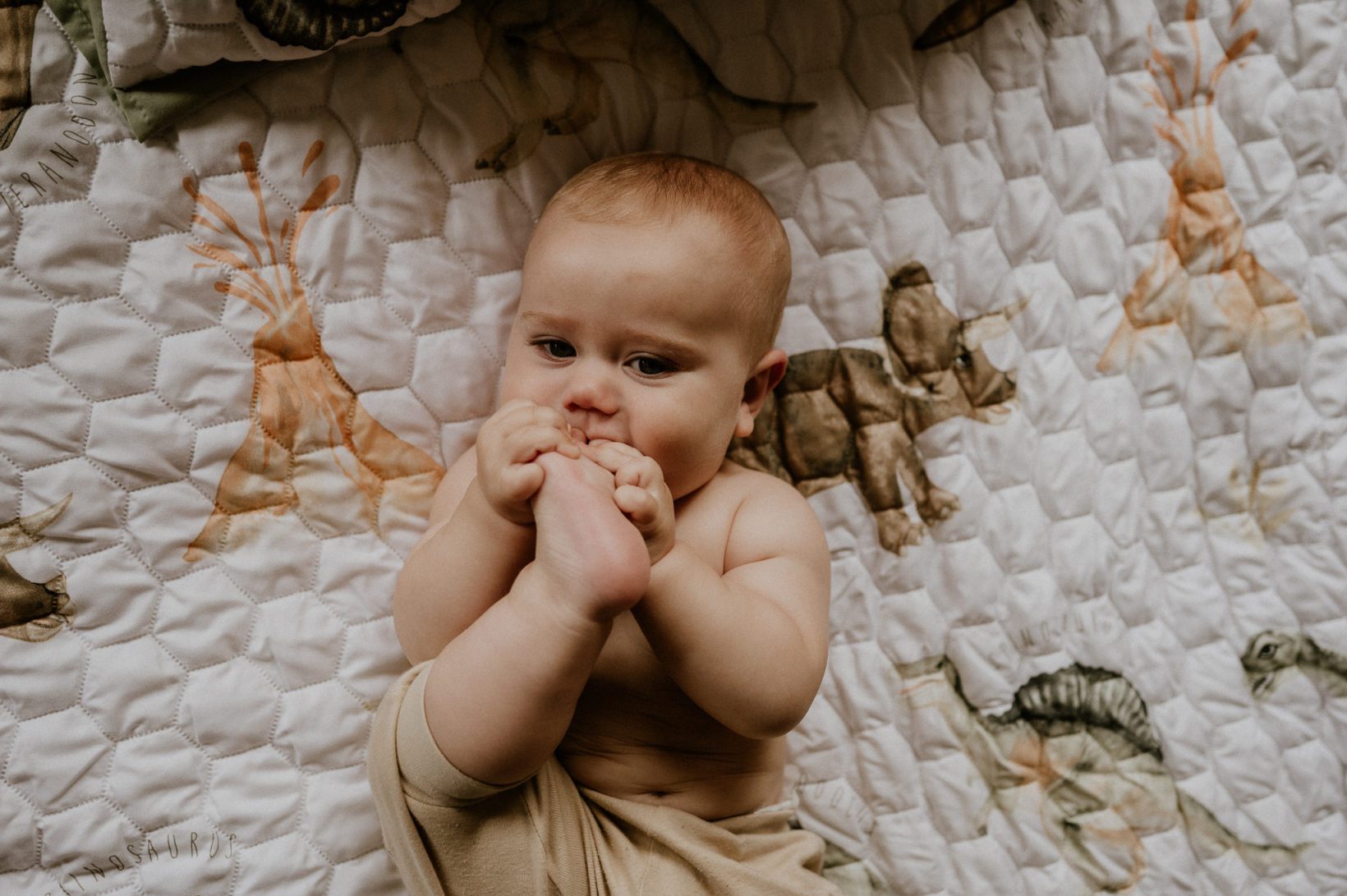The American Academy of Pediatrics has just released their updated safe sleep guidelines for the first time in six years. While many of their recommendations remain unchanged from 2016, the prevailing message seems to be this: Babies need to sleep on their backs, alone.
The AAP continues to recommend exclusive breastfeeding stating that:
Breastfeeding is associated with a reduced risk of SIDS. Unless contraindicated, mothers should breastfeed exclusively or feed with expressed milk (ie, not offer any formula or other nonhuman milk-based supplements) for 6 months, in alignment with recommendations of the AAP.
At the same time the guidelines also state that:
It is recommended that infants sleep in the parents’ room, close to the parents’ bed, but on a separate surface designed for infants, ideally for the first year of life, but at least for the first 6 months.
And that:
Infants who are brought into the bed for feeding or comforting should be returned to their own crib or bassinet when the parent is ready to return to sleep
Any breastfeeding mother knows that babies tend to fall asleep at the breast, so these recommendations are not only impractical, but also sets mothers up for breastfeeding failure and are potentially putting mothers and their babies in dangerous situations.

Refusal to Provide Safe Cosleeping Guidelines Puts Babies in Danger
Imagine for a moment, a new mother to a two-month old baby.
She feels terrified of the “dangers” of bedsharing.
Afterall, she’s seen the fear-mongering ads with butcher’s knives in beds, she’s read the AAP guidelines and she’s trying to take them literally, her mother-in-law bought her a crib and painted the baby’s room with non-toxic paint, all her friends are sleep training and she wants to do the ‘right’ thing. She wants to keep her baby safe. Isn’t that her responsibility as a parent?
She’s also committed to exclusively breastfeeding for at least the first 6 months and her baby – like all babies – needs to breastfeed through the night.
So, night after night, she hops out of bed multiple times to breastfeed her baby on the sofa.
Sometimes she is beyond exhausted as she battles to keep her eyes open.
Sometimes she falls asleep for a few minutes on the sofa and wakes up in a startled panic to check that her baby is ok.
Sometimes, she is so exhausted that she just needs to be horizontal so she brings her baby into her bed, with every intention of returning her baby to his crib, but she accidentally falls asleep.
Both of these scenarios are risky and unsafe. Accidentally falling asleep on a sofa is the most dangerous surface to share with an infant.
Bringing a baby into an adult bed without preparing it as a safe sleep surface first is also dangerous.
This mother is beyond exhausted, yet she’s trying to do all the ‘right’ things. She’s starting to feel anxious and she’s dreading her nights with her baby.
She can’t be the mother she wants to be during the day either; she’s tapped out. She’s holding on by a thread as everyone is telling her to enjoy her motherhood, but her joy is being robbed by her unending fatigue.
She’s starting to feel like a failure, yet she won’t sleep train her baby. Her partner is supportive but starting to hint that something needs to change…they simply can’t go on like this.
The inescapable truth is that breastfeeding and isolated crib sleeping are like oil in water…they just don’t mix.
Breastfeeding and bedsharing are part of an ecosystem, we can’t remove one without the whole system failing, without a baby being put in harms’ way.
Why We Need to Provide Safe Cosleeping Guidelines to All Parents
All parents and caregivers – whether they breastfeed, bottle feed, plan to crib sleep or not – must be informed about what constitutes a safe cosleeping environment. Why?
Because the truth is that the vast majority of parents will bring their babies into their beds at some point, whether they intend to or not.
Studies show that eventually 60-75% of breastfeeding mothers will bring their babies into bed with them at some point. Professor James McKenna, suggests at least 50% of all parents – breastfeeding and bottle feeding – bedshare at some point during the night. (1)
Another study found that 44 percent of mothers who nurse on a sofa, recliner or nursing chair at night fell asleep there at least once. (2) Eventually, many mothers realise that bedsharing is a low-risk sleep arrangement, in spite of medical recommendations. But, as a result of inflexible medical recommendations, they often go through several high-risk situations, such as sofa-sharing, before coming to that conclusion. (3)
It’s so important to recognise that accidental bedsharing is fundamentally different to intentional bedsharing because accidental bedsharing parents are unlikely to have taken steps to ensure that their bed is a safe sleeping environment, because they never intend to bedshare.
Sarah Ockwell-Smith performed a survey with over 600 parents and 46% said they’d lied to their doctor, midwife or healthcare provider about bedsharing for fear of being judged as doing the ‘wrong’ thing. And so parents are left feeling isolated – as if they’re the only ones doing it and they need to keep it a secret.
While bedsharing *can* be dangerous when safe sleep recommendations aren’t followed, how are new parents supposed to know how to bedshare safely if no one is talking about it?
If we know that the majority of parents will bedshare at some point, don’t we have a responsibility to provide important safety information instead of sticking our heads in the sand and pretending they won’t do it?
Failing to provide safe cosleeping guidelines and promoting abstinence only messaging is the same as telling teenagers to never have sex and providing them with no safe sex information. We wouldn’t dream of doing that, because all humans will do what come naturally biologically…and for parents and babies, that is cosleeping.
Not all countries withhold this information. Norway, for example, gives parents information on safe cosleeping as below:

When safe cosleeping information is withheld from parents, families are experiencing a huge disservice while babies are potentially being put in harm’s way.
As parents, we need to stand in our own power. We need to see our doctors for who they are – service providers, generally paid for by our tax dollars. They are in our service, they are not the decision makers. We are.
So, it is our responsibility as parents to comprehensively research and understand what constitutes safe infant sleep. To understand the risks and benefits of our individual choices.
Should I cosleep with my baby?
I can’t answer that question for you, because the truth is that each circumstance is so unique.
Just as we shouldn’t be telling all parents that bedsharing is categorically dangerous, neither can we say that it is categorically safe.
There are individual risk factors that need to be addressed on an individual basis.
What I can say, is that in my personal situation, as a sober, non-smoking, healthy, breastfeeding mother to a full term healthy baby who intentionally chose to bedshare and created a safe cosleeping environment, cosleeping with my baby saved me.
I don’t know how I would have survived the early weeks and months (and years) of motherhood without it. I also wouldn’t have been able to meet my breastfeeding goals. As a result of breastsleeping, I thrived through my early motherhood, and found joy hidden in the most unlikely hours of the early morning.

Where can I find information on safe infant sleep?
I am absolutely passionate about this topic, so I have spent the last 6 months creating a brand new course called The Sleepy Baby. It is open for enrolment now and doors close on June 28th. Check out the course here.
Here is a list of some of my favourite and most trusted resources on infant sleep:
The Safe Cosleeping Guidelines
These safe cosleeping guidelines by Dr. James McKenna outline the necessary steps parents need to take to ensure a safe sleep environment. Dr. James McKenna is the world’s leading expert on safe infant and mother sleep.
La Leche League International’s Safe Surface Checklist
Whether your baby bedshares or sleeps in a crib it is critical to make sure the surface is safe.
The Safe Sleep Seven by La Leche League International
This is a wonderful resource that outlines the “Safe Sleep Seven” checklist that parents must ensure are in place to make bedsharing as safe as possible.
Sleep and Night Time Resources Unicef UK
This page has three amazing and downloadable PDF’s on Caring for your baby at night, Cosleeping and SIDS and Resources for Safer Sleep Week (in conjunction with Basis and The Lullaby Trust)
Baby Sleep Info Source (BASIS)
Founded by Professor Helen Ball, BASIS is a wealth of information for new parents trying to navigate sleep. Check out the whole website and they also have an Infant Sleep Info App, which can help with a number of questions such as, where should my baby sleep?
The Lullaby Trust
The Lullaby Trust has recently updated its Safe Sleep Information to include information on safe cosleeping and SIDS.
References
- Safe Infant Sleep: Expert Answers to Your Cosleeping Questions, Dr. James McKenna
- Kendall-Tackett, K, et al. Mother-Infant Sleep Locations and nighttime feeding behavior. Clinical Lactation 1, no. 1 (2010):27-30
- Colson, E. R., Willinger, M., Rybin, D., et al. Trends and factors associated with infant bed sharing, 1993–2010. The National Infant Sleep Position Study. JAMA Pediatrics 167, no. 11 (2013): 1032–1037.

Comments